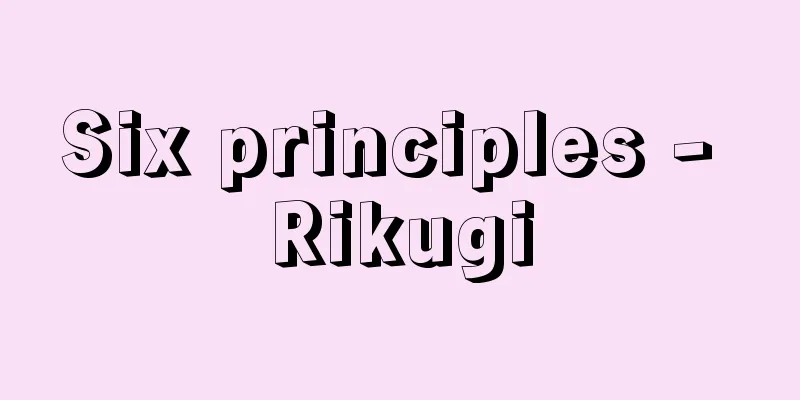Children's literature

OverviewLiterature created by adults with children as its primary audience. In terms of form, it includes purely creative works such as picture books, fairy tales, novels, nursery rhymes, poems, and plays, as well as retellings of myths, legends, and folk tales, retellings of originally adult literature such as "Robinson Crusoe" that were included in this category by children, and even books of general knowledge. [Teruo Jingu] Differences from adult literatureSince the late 1960s, works aimed at older children and young people have been questioned again about their differences from adult literature, because their content is similar to that of adult literature. Traditional literature such as folk tales that continue to be included in children's literature and live on in the present day were originally oral literature, and therefore have characteristics such as simplicity of expression, commonality of form, and major themes. Furthermore, the themes conveyed are not those of individual narrators, but have been passed down from generation to generation as the crystallization of the wisdom of many people. Children's literature, including novels, has almost all of the above characteristics in common. Therefore, children's literature has a roughly fixed form (or pattern) in the development and conclusion of the plot, and can be said to be literature that conveys basic themes about humans discovered by the wisdom of humanity rather than that of individuals. This forms the core of children's literature, and works of the same nature as adult novels exist concentrically around it. However, even in these works, the characters and situations are depicted from the standpoint and perspective of boys, girls, and young people, which is why they are different from adult literature. [Teruo Jingu] foreign countryBefore the 18th century, there were few books aimed at children, so children were told myths, legends, folk tales, and Aesop's fables. However, there were a few textbooks, such as the English historian Bede's Book of Natural History (8th century) and the Bohemian pastor Comenius' Atlas of the World (1658), as well as books for religious education and discipline, such as Puritan James Janeway's (1636-1674) Gifts to the Children (1671-1672). Charles Perrault's Fairy Tales also came from the court of Louis XIV. [Teruo Jingu] 18th centuryThe rise of civil society and the Enlightenment gave birth to modern novels and children's literature. Defoe's Robinson Crusoe (1719) and Swift's Gulliver's Travels, with their adventurous spirit and clarity, were soon handed to children as chapbooks, small pamphlets of 24 pages on average. John Newbery, who foresaw a new market in this phenomenon, published A Pretty Pocket-Book (1744) and other works based on John Locke's educational theory for the purpose of "education and entertainment," playing a pioneering role in the publishing of children's books. Sarah Fielding (1710-1768) was also faithful to Locke's educational theory and methods, and, following the advice of her brother Henry Fielding and Samuel Richardson, published the first fiction in the history of children's literature, A Little School for Girls, which became the source of girls' novels. Rousseau was also a major influence. Joachim Heinrich Campe (1746-1818) of Germany added natural philosophy to Robinson Crusoe in his New Robinson Crusoe. Mme de Genlis (1746-1830) of France published Adèle and Théodore (1782), a collection of letters in which she criticized fairy tales as useless, and Arnaud Berquin (1747-1791) is famous for his A Friend to Children (1782-1783). Thomas Day (1748-1789) of England published Sandford and Merton (1783-1789), a children's version of Emile, and Maria Edgeworth is known for her Advice to Parents (1796) and other works. Mrs. Sarah Trimmer (1741-1810), famous for her book "The Story of the Robin" (1786), and Hannah More (1745-1833), famous for her religious education pamphlets including "The Shepherdess of Salisbury Meadow" (1795), both rejected fairy tales and adventures, and actively worked to promote faith, discipline, and knowledge. [Teruo Jingu] 19th centuryA product of imaginationRomanticism had a strong influence on children's literature in this century. Its insistence on the free development of the imagination prompted a new appreciation and collection of folklore literature. In Germany, A. Arnim and C. Brentano published The Boy's Magic Flute (1806), and the Brothers Grimm published Fairy Tales for Children and Homes (1812 and onwards). These works explored the hearts and souls of the German people and passed them on to children, paving the way for the collection and retelling of old tales and nursery rhymes, and the development of new imagination. This was followed by the Norwegian Folk Tales by Asbjornsen and Jørgen Moe (1813-1882), the Russian Folk Tales by Afanasyev, and the English Folk Tales by Joseph Jacobs (1854-1916). The new appreciation of traditional literature led Danish author Hans Christian Andersen to create "Stories for Children" (1835), which developed his own unique view of life and aesthetic sense rooted in old tales. He left behind over 160 so-called "Andersen fairy tales" throughout his life, greatly changing the perception of the value of children's literature. In Germany, E. T. A. Hoffmann created "The Nutcracker and the Mouse King," which later became a ballet with its colorful fantasy and bizarre story development, and W. Hauff created "The Caravan," whose form and material are inspired by "Arabian Nights" and whose fantasy is clearly influenced by Hoffmann, among others. In the second half of the 19th century, mainly in England, the products of imagination were born that contained the contents of traditional literature but were not bound by its forms, and these came to be called fantasy. Clergyman and social reformer Charles Kingsley wrote The Water Babies, based on the motif of a fusion of the biblical view of the universe and biological evolution theory, while Oxford University professor Lewis Carroll published Alice's Adventures in Wonderland and Through the Looking Glass, which attempted to reveal the truth from the clash between common sense and nonsense, introducing children to the joy of new fantasy. Edward Lear also brought the joy of nonsense rhyming to a climax in The Nonsense Book. George MacDonald, who started out as a clergyman, established the mainstream of fantasy by exploring God in works such as The Country Behind the North Wind. [Teruo Jingu] Adventure novelsHistorical romances, such as Ivanhoe by the British romantic novelist Walter Scott, entertained children with images of a glorious past of adventure, dreams, and heroes, and at the same time served as the source of historical stories. James Fenimore Cooper, known as the American Scott, wrote five books, including The Last of the Mohicans, which stirred up interest in adventures in the untamed wilderness and the noble American Indians, eventually giving rise to popular western novels such as Karl May's The Big West in Germany, and western novels by Emiglio Salgari (1863-1911) in Italy. In France, under the influence of Scott, Alexandre Dumas provided adults and children with entertaining reading material with intriguing characters and events, such as "The Three Musketeers" and "The Count of Monte Cristo." Jules Verne, based on the spirit of Romanticism, created the genre of science fiction with works such as "Journey to the Center of the Earth" (1864) and "Twenty Thousand Leagues Under the Sea," which offered sharp insights into the future opened up by science. In England, the tradition of Robinson Crusoe was joined by a romantic spirit, and an unprecedented development of adventure stories for children was observed. Frederic Marryat (1792-1848), a naval officer, was angry at the free-spirited and scientifically-ignoring Swiss Robinson by Wiess of Switzerland, and wrote a factual children's Robinson, Masterman and Lady of the Ancient Mariner (1841), which became the pioneer of adventure stories for children, and created a historical novel for children with The Children of the New Forest. Robert Michael Ballantyne's (1825-1894) Coral Island is also a boy's version of Robinson, but the protagonists are the ideal boys that 19th century England wanted. These works were strongly marked by a didactic nature, but it was R. L. Stevenson's Treasure Island that removed this and became a model for adventure stories with its accurate character creation and skillful selection of episodes and plot. Inspired by this, Rider Haggard wrote King Solomon's Treasures, which also captivated readers. [Teruo Jingu] Everyday Life StoriesWhile retaining the didacticism of the previous century, there was a gradual shift to stories centered on sentimental interest. The readers and characters were mainly girls. In England, works such as The Fairchild Children by Mary Martha Sherwood (1775-1851), which focused on Puritan religious education, and The Chain of Daisies by Charlotte Mary Yonge (1823-1901), which was written in Germany, portrayed the ideal image of girls and boys through stories full of morals and sentimentalism, and The Easter Eggs by Christoph von Schmidt (1768-1854) and The Blind Boy by Gustav Nieritz (1795-1876), among others. However, signs of progress gradually appeared in the overall trend. In England, Catherine Sinclair (1800-1864) published "The Cottages," a story with little moralizing, featuring lively, childlike boys and girls. In the second half of the century, J. H. Ewing (Mrs. Ewing) wrote "Jacanapes" and other works that portrayed human beings calmly and impartially, and could be called truly realist. Mary Louisa Molesworth (1839-1921) shed light on the inner world of young children in "Carrots," and furthermore, in "The Cuckoo Clock," she turned children's fantasies into a story, creating a new fantasy of magic in everyday life. In America, perhaps because the existence of the frontier was a dream that exceeded the imagination, realism was originally the mainstream, with Mary Mapes Dodge depicting a real-life child in "Hans Brinker," set in the Netherlands, and Louisa May Alcott portraying a group of American boys and girls faithful to the details of life in their home lives in "Little Women" and other works. While she retained some sentimentality and didacticism, Mark Twain's "The Adventures of Tom Sawyer" and "The Adventures of Huckleberry Finn" are completely devoid of these, and are filled with a critical spirit that looks at society through the eyes of a true commoner child, strongly emphasizing the superiority of children over adults, and laying the foundation for American realism. Frank Baum's "The Wizard of Oz," published in 1900 at the turn of the century, summarized the American ideal in a fantasy story based on reality. The romantic idea that children are superior to adults was amplified with excellent storytelling in works such as "Heidi" by Johanna Spyri of Switzerland and "The Little Prince" by Mrs. Burnett of the United States, and has had a strong influence on the view of childhood ever since. "Pinocchio" by Carlo Collodi of Italy captured the hearts of readers with its realistic portrayal of children rather than its inherent moral teaching, and "Cuole" by Edmondo de' Amicis also moved children with its humanitarian ideals. [Teruo Jingu] Picture booksThe expanding market, improvements in printing technology, and a greater awareness of children led to the production of excellent illustrations and picture books. In Germany, Heinrich Hoffmann's "Shaggy Peter" and Wilhelm Busch's "Max and Moritz" were published, and in Britain, the nonsense poet Lear's "The Nonsense Picture Book" and other works by Walter Crane (1845-1915), Randolph Caldecott (1846-1886), Kate Greenaway (1846-1901), and others ushered in the golden age of picture books in the 19th century. [Teruo Jingu] 20th centuryUntil World War IAlthough each country was moving towards a new century and replacing old traditions, nothing truly 20th century had been born yet. The richest fruits were found in England. In the afterglow of the Victorian era (1837-1901), writers were in a stable prosperity and wrote stories about childhood, the best time of life, to share with children. James Barrie told the original dream of human beings in "Peter Pan and Wendy", and Radiard Kipling created a new direction in children's literature, school stories, and historical novels with his jungle adventure story "The Jungle Book", which follows on from Rousseau's ideas. Kenneth Grahame's "The Good River", filled with beauty, poetry, and laughter, brought joy to people, and E. Nesbitt captured the natural image of children in "The Treasure Hunters" and completed the fantasy created by Mary Louisa Molesworth (1839-1921) in "The Sand Fairies". Beatrix Potter's picture book Peter Rabbit and Helen Bannerman's (1862-1946) Little Black Sambo can also be said to be products of overall wealth. If we add to the above findings German works such as Agnes Sapper's "Auschwitz," which depicts the daily life of a large musical family, and Waldemar Bonsels' "Maya the Bee," which tells the story of the insect world, centered around bees, as an allegory for humans, we can see new trends while still including some old elements. The Wonderful Adventures of Nils (by Selma Lagerlöf), which was commissioned by the Swedish Ministry of Education as a story to teach children about their homeland, was also evidence that other countries were beginning to consciously place importance on children's literature. [Teruo Jingu] 1920sAmerica was a new country, so it put a lot of effort into education from the beginning. In 1909, the White House held a conference on youth issues, which further increased interest in children. In 1922, the Newbery Award for Children's Literature was established, and the children's book review magazine, The Horn Book, was launched in 1924. Hugh Lofting's "Doctor Dolittle in Africa" was a truly 20th century work, with its fresh ideas, simplicity of story, and ideals of anti-war and peace. The same idealism can be seen in animal stories, such as Austrian author Felix Salten's "Bambi." Behind the realistic stories that depict animals from the inside, so to speak, is a strong desire for peace. After the revolution, the Soviet Union produced works such as "The Golden Watch" by Panteleyev, which depicts the new nation and the way of life within it through the thefts of a homeless child, and "The Adventures of Boris" by Gaidar, which vividly depicts the period of revolution and civil war. In contrast, Britain was in the heyday of escapist poetic fantasy, and many typical works were produced. Among them, those who expressed wonder, beauty, and the truth of humanity were Walter de la Mare, known for "The Three Little Monkeys," Eleanor Farjeon, who wrote "Martin Pippin in the Daisy Field," and A. A. Milne, who wrote "Winnie-the-Pooh." [Teruo Jingu] 1930sThe economic depression that began at the end of the 1920s, the political crisis that followed, and the war that followed had a major impact on children's literature. The overall trend was a strong awareness of society and life. In America, where the depression originated, a return to the Golden Age and the Western frontier, which could be said to be a reaffirmation of ideals, were depicted in Carol Ryrie Brink's (1895-1981) Caddy Woodlawn and L. I. Wilder's Little House in the Big Woods and its sequels. The Good Squire, which depicts a Hungarian farming village by Hungarian-born Kate Seredy (1899-1975), and Dobry, which depicts a boy living in a Bulgarian farming village by Monica Shannon (1890?-1965), were also expressions of American ideals. The shadow of poverty loomed over Eleanor Estes's The Moffatt Brothers and its two sequels. In Britain, novelist Jack Lindsay (1900-1990) and children's writer Geoffrey Trease (1909-1998) wrote works that promoted socialist ideology, and generally had a strong realist style. Eve Garnett's "Bag Alley No. 1" portrayed a slum worker's family with warm sympathy, and other works featuring working children followed. Arthur Ransome raised the status of children's literature by accurately depicting children on vacation and reviving the joy of adventurous stories for the modern age. However, it was Erich Kästner of Germany, whose works "Emil and the Detectives" and "The Flying School" best expressed the spirit of this period, touching on real-life problems through the adventures of real children and criticizing the times with ideals. In the UK, masterpieces of fantasy were born, such as "Mary Poppins Came on the Wind" (Pamela Travers), in which an ingenious maid conveys wonder and beauty by performing nonsensical wonders, J.R.R. Tolkien's epic fantasy "The Hobbit," which was later expanded into "The Lord of the Rings," and Alison Uttley's (1884-1976) time fantasy "The Traveler in Time." All of these works show a mixture of a strong critical spirit and escapism. [Teruo Jingu] 1950sAfter World War II, many factors came together to make children's literature global, including the ideal of world peace, strengthened international cooperation, and cultural exchange. For example, Sweden's Astrid Lindgren skillfully created stories that explored children's inner worlds and motivation in works such as Pippi Longstocking (1945), a fantastic adventure story about a girl with psychic powers, and Mio, the Prince of Wales (1956), a fantastic heroic tale. In realistic stories, Edith Unnerstad (1900-1982) and Hans Peterson (1922- ) portrayed boys and girls with a strong regional appeal. From Norway came Thorbjørn Egner's (1912-1990) heartwarming comedy with pictures and songs, The Merry Robbers, and Alf Preussen's Auntie Little Spoon, the story of a housewife with a habit of suddenly becoming as small as a spoon. From Finland came the Moomin series, beginning with Tove Jansson's The Comet in Moominland, which was first written in Swedish and later translated into languages all over the world. France, which had not done well in the 1930s, only producing Jean de Brunhof's "Babar," began to flourish with the publication of René Guillot (1900-1969) with "The Elephant" and other animal stories, Paul Bernat with "The Headless Horse," and Henri Bosco with "The Boy and the River." However, the most famous novel was Saint-Exupery's posthumous work "The Little Prince," which was filled with deep thoughts about humanity. Germany also saw remarkable development, with Hans Baumann, who published a series of historical novels focusing on turning points in history shortly after the war, James Krüss (1926-1997), who spoke of the ideal of humanity with the imagination of German fairy tales, and Otfried Preussler, who created fun and easy-to-understand stories based on fairy tales, such as "The Little Witch," which conveyed the joy of living to young children, all of whom began to be active. The development of the genre in the English-speaking world was also remarkable. In the UK, a succession of works were published, including Rosemary Sutcliffe's "Holding Up the Lamp" and Cynthia M. Harnett's (1893-1981) "A Bale of Wool," which are detailed historical novels based on historical research and imagination, William Maine's "The Bees in May," which features sharp psychological insight and fresh writing, and Lucy Boston's fantasy of an old house, "The Children of Green Knowe." Among these, the so-called "Chronicles of Narnia," which is centered on C.S. Lewis's "The Last Battle," which explores eternal life and God, and Tolkien's three volumes of "The Lord of the Rings," greatly expanded the possibilities of children's literature, especially fantasy, and continue to have a great influence today. Furthermore, Philippa Pearce's "Tom in the Midnight Garden" is also considered a masterpiece of this period. American realism, with its profound exploration of the inner world of children in Dutch-born Meindert deYoung's The Stork and the Six Dolphins, reached a highly sophisticated literary level with Scott O'Dell's (1898-1989) The Island of the Blue Dolphins. Fantasy also produced masterpieces such as EB White's (1899-1985) Charlotte's Web, which combined real-life experience with extraordinary ideas. The 1950s was a period of idealism and optimism, when the boundaries of what constituted children's literature were implicitly observed. [Teruo Jingu] After the 1960sThe changes in morals, the rapid development of science and technology, especially the diversification of media, and the expansion of the economy have all significantly changed the situation surrounding children, and children's literature has also undergone a rapid qualitative transformation. One of these changes is the expansion of the scope of works that were once considered adult novels, such as Golding's Lord of the Flies (1954) and J. D. Salinger's The Catcher in the Rye (1951), to the extent that they are now on the fringes of children's literature. A symbolic work is John Rowe Townsend's The Hard Summer of Arnold, a British novel that sparked intense debate for its depiction of the reality of a 16-year-old's life without prospects. Since then, Jill Paton Walsh (1937-2020), K. M. Paton, and William Corlett (1938-2005) have continued to do excellent work in this field in the UK. The expansion of the field has also brought about a more realistic perspective on children and their situations. In Germany, Hans Peter Richter (1925-1993) summarized the tragedy of the Jews under the Nazi regime in "Frederick Was There," while Peter Härtling (1933-2017) tackled the issue of disabled children head-on in "There Was a Child Called Hilbel." Austria's Christine Nöstlinger (1936-2018) has created new appeal with her reliable realism work "Spring Came Early That Year," which depicts the situation in Austria immediately after the defeat from a child's perspective. The trend to get closer to reality inevitably produced works with motifs that strongly criticized the discrimination, prejudice, and lack of understanding that surrounds children. Britain had traditionally not favored this trend, but from the mid-1970s, Bernard Ashley (1935- ), Robert Leeson (1928-2013), and Jan Needle (1943- ) began to write works that sharply criticized racism and class discrimination and the responsibility of adults toward children. This movement in the United States was much earlier and stronger, but it has reached a height far beyond the issue-centered, protest-first stage, with writers such as Paula Fox (1923-2017), who accurately captured the dreams and reality of an African-American boy through the eyes of a child in How Many Miles to Babylon; Vera Cleaver (1919- ) and Bill Cleaver (1920-1981), who depicted the strength of children under extreme circumstances in Little Grover; and Virginia Hamilton (1936-2002), who told the history, dreams, and reality of African-Americans and Native Americans in I Am Alila. In the field of fantasy, epic fantasy works such as Alan Garner's The Owl Plate and Ursula Le Guin's (1929-2018) Duel with the Shadow were born, and in Germany Michael Ende's The Neverending Tale, which is rich in fairy tale tradition and philosophy, opened up a fresh world. [Teruo Jingu February 16, 2018] JapanBefore the Meiji PeriodFrom ancient times, there are picture scrolls such as "Choju-giga" (12th century) attributed to Toba Sōjō (Kakuyū), and the Otogi-zōshi (fairy tales) and Edo-period illustrated books, which were produced from the Northern and Southern Courts to the early Edo period, all of which were far superior to similar European works of the same period. Furthermore, books of knowledge, such as "Kinmō Zui" (1666) by Nakamura Tekisai, have high historical value similar to the works of Comenius. [Teruo Jingu] Meiji PeriodThe modernization brought about by the Meiji Restoration in the second half of the 19th century prompted the conscious development of children's culture, first resulting in magazine journalism such as the general magazines Shonen-en (1888), Kokokumin (1889), and Nihon no Shonen (1889). Hakubunkan, the publisher of Nihon no Shonen, began publishing the 32-volume series Juvenile Literature Sosho by Kenyusha authors, the first of which was Koganemaru (1891) by Iwaya Sazanami, which became the de facto first work of Japanese children's literature. While Sazanami retold traditional Japanese and foreign literature, she continued to write what were known as "fairy tales," such as Sarukani Kohitan, and established children's literature. On the other hand, translations of works such as "Robinson's Vacation" (translated by Inoue Tsutomu, 1883) and "Fifteen Boys" (translated by Morita Shiken, 1896) eventually gave rise to over 50 works, beginning with Oshikawa Shunro's "Undersea Battleship" (1900), and Emi Suiin's "Boys of the Sea" (1901). In terms of the history of children's literature, Sazanami's new-age expression of traditional morality in a folk-literature style, and Shunro and his militaristic adventure stories, can be seen as a continuation of the "narrative" characteristics. In comparison, the work of Wakamatsu Shizuko, who translated "The Little Prince" (1890-1892) for "Jogaku Zasshi" (first published in 1885), can be seen as introducing a novelistic quality to children's literature, along with the introduction of a different moral system, Christian morality. [Teruo Jingu] Taisho periodIt was a time when the elements that had emerged during the Meiji period nurtured amid economic development, the formation of a small-scale civil society, and the spread of democratic and liberal ideas. Magazines continued to be published in the Meiji period, with new titles such as "Shojo" (1913), "Shounen Club" (1914), and "Ryoyu" (1916), and in 1918 (Taisho 7), "Akai Tori" (Red Bird), which represents this period, was launched by Suzuki Miekichi. It was followed by "Otogi no Sekai" (Fairy Tale World), "Kin no Fune" (later "Kin no Hoshi"), and "Dowa" (Children's Stories). Of these, the greatest achievement of "Akai Tori" was the creation and movement of children's songs by Kitahara Hakushu, who had a view of children that was similar to that of British Romantic poets, and Saijo Yaso also contributed to it. Furthermore, he began to develop new paths in both fantasy and realistic works such as "The Spider's Thread" (Akutagawa Ryunosuke), other stories, realistic works such as "The Grapes of Grapes" (Arishima Takeo), and fairy tales series, such as "The Moonlit Night and Glasses" (Ogawa Mimei). In the early hours, he began to develop new paths in both fantasy and realism, by collecting works such as "The Red Candle and the Mermaid" that incorporates unique ideas into a folk tale-like form, as well as short stories that look like sketches of children's personalities. Based on "Ryotomo", Hamada Hirosuke included short stories with common morality and Japanese sensibilities in "The Dream of Mukudori," and was called the pioneer of literature for children. Chiba Shozo, author of "Fairy Tales," depicts the daily life of a farmer's children in "Tora Chiyan's Diary." Many fairy tale writers also contributed to "The Golden Ship," but Noguchi Ujo's children's songs also gained popularity. In addition, Jitsugyo no Nihonsha's "Ittoshigo Series" (1913-1914), which includes Nogami Yayoko's "Nozomi" and Tokuda Akie's "Meguriahi" are also a major mark. [Jingu Teruo] Showa and prewar periodThis period, which began in the midst of an economic recession, can be said to be an era of realism, just like Europe and America. A notable movement was the journey towards proletarian children's literature, which is said to begin in the "Service of Children" column created in the Protestant Newspaper in 1926 (Taisho 15). Although it retained nothing typical of works, it had a great influence on the perspective of children, and inevitably produced so-called fairy tales of everyday life that captured children's daily lives in the trends of society as a whole, and tried to depict children in a comprehensive manner. Ino Shozo (1905-1985), Oka Kazuta (1903-1986), Namachi Saburo (1907-1978), and Miyahara Mukaju (1907-1981) wrote works with strong ideological ideology, while Makimoto Kusurou developed the theory.になったんです。 English: The first thing you can do is to find the best one to do. [Jingu Teruo] Showa and postwarImmediately after the Pacific War, magazine culture flourished, and many short stories with clear claims were published by Hiratsuka Takeji, Okamoto Yoshio, Seki Hideo, and Tsutsui Keisuke (1918-2005), but as the magazines were discontinued, activities also stagnated. What remained at this time were "Non-chan Cloud Riding on the Clouds" (Ishii Momoko), a story about a child's growth backed by Western morality, "The Burmese Harp" (Takeyama Michio), which has a long-form structure, and "Twenty-four Eyes" (Tsuboi Sakae), a history of the common people during the war. Creation began to be published again in the early 1960s when writers of the postwar generation began to grow and economic power began to rise. In 1959, "The Little Country No One Knows" (Sato Satoru) and "The Dwarfs of the Wooden House" (Inuito Miko), which spoke about their postwar ideals based on the existence of dwarfs in everyday life as ideas, appeared. The following year, in 1960, the realism "The Red Gable Pochi" (Yamanaka Tsune (Hisashi), which carefully sought the life of a family of workers, with a focus on girls, and "Tatsunoko Taro" (Matsutani Miyoko), which recreated folk tales, began true postwar children's literature, and the work that was carried out with idealism and visionary nature throughout the 1960s. However, the changes in life associated with the high economic growth and the impact of the various problems that it brings on children inevitably fostered changes in the work as well. The iconic work was "Bokuchan's Battlefield" by Okuda Tsuguo (1934-), and for the first time, a child was portrayed without wearing a fantasy garment, which spurred realism. In addition, in terms of works that focus on anti-war and peace, the war of invasion was treated unpopularly by the Chinese boys by Yang (Maekawa Yasuo). In the 1970s, the technique was remarkably improved, as seen in the method in which Midsummer Flag explored the efforts of young people in the lives of the young men and women, and showed a variety of developments, including the childhood literature of Ozawa Masaru (1937-2008), Yamashita Akio (1937-), and Teramura Teruo, the humorous and nonsense works of Kadono Eiko (1935-), and the long storylines that emphasized the storylines of Ueno Akira (1928-2002), Nasu Masamoto (1942-2021). [Jingu Teruo] "Guide to Children's Literature by Jingu Teruo (1963, Rironsha)" ▽ "Theory of Children's Literature by L.H. Smith, translated by Ishii Momoko, Seta Sadaji, and Watanabe Shigeo (1964, Iwanami Shoten)" ▽ "Bettina Huliman, translated by Nomura Shigeo, The World of Children's Literature by Children's Literature by Ando Mikio, 3 volumes (1975-1977, Kaiseisha)" ▽ "English and American Children's Literature by Sugiichiro (1977, Nakakyo Publishing)" ▽ "English and American Children's Literature by Sugiichiro (1977, Nakakyo Publishing)" ▽ "English and American Children's Literature by Igoff, Stubs and Ashley, translated by Inokuma Yoko, Shimizu Masako, Watanabe Shigeo, 3 volumes (1978-1980, Iwanami Shoten)" ▽になったんです。 English: The first thing you can do is to find the best one to do .になったんです。 English: The first thing you can do is to find the best one to do . "Choosing Contemporary Japanese Children's Literature: Materials and Research" (1994, Morikita Publishing)" (1994, Morikita Publishing)" (1995, Hisayama Publishing)" (1995, Hisayama Publishing)" (1995, Kusayama Publishing)" (1998-2001)" (1998-2001)" (1998-2001) " ( Kanao Kanaya, "The Biographical and Children's Literature" (1999, Minerva Shobo)" (1999, Minerva Shobo)" (1999, Minerva Shobo)" (1999, Torigoe Shin's History of Japanese Children's Literature (2001, Minerva Shobo)" [Reference items] | | | | | | | | | Tale | | Iwatani Konami | | | | | | | | Haruna | | | Garnet | | | | | | | | | | | | | | | | | | | | | | | | | | | | Chiba Shozo | Tsuboi | | | | |Collection by Mariah Edgeworth, National Diet Library "> "Adviser to parents" Charles Kingsley, National Diet Library "> "The Child of Water" Lewis Carroll, National Diet Library "> "Alice in Mysterious Land" Collection of the National Diet Library by Frederick Mariatt "> "Old Sailor Master Man Lady" Robert Louis Stevenson, National Diet Library "Treasure Island" Catherine Sinclair, National Diet Library "> "The Villa Story" Written by Iwaya Sazanami, illustrated by Takeuchi Keishu, published in 1891 (Meiji 24), owned by the National Diet Library "Monkey and Crab Sequel" Source: Shogakukan Encyclopedia Nipponica About Encyclopedia Nipponica Information | Legend |
概説大人が子供をおもな読者と想定して創作した文学。形式上、絵本、童話、小説、童謡、詩、戯曲などの純創作に、神話、伝説、昔話などの再話、『ロビンソン・クルーソー』のような本来大人の文学で子供によってこの分野に含まれたものの再話や、広く知識の本までをも含み込む。 [神宮輝夫] 大人の文学との違い1960年代末以降、年齢の高い子供や若者を読者とした作品は内容的に大人の文学と近いため、改めて違いが問われた。児童文学に含まれて生き続けている昔話などの伝承文学は本来口誦(こうしょう)文学であったため、表現の簡明、形式の共通性、大きな主題などの特質をもつ。さらに、伝えられる主題は語り手個人のものではなく、多数の人間の知恵の結晶として代々伝えられたものである。児童文学は小説を含めてほぼ前述の特質と共通する性質をもっている。だから、児童文学とは、筋の展開と結末についてほぼ一定の形式(あるいはパターン)があり、個人のというより人類の知恵が発見した、人間についての基本的主題を伝達する文学だともいえる。これが児童文学の中心部分を形成し、その周辺に大人の小説と性質の同じ作品が同心円的に存在している。だが、それらにしても、登場人物と状況はあくまで少年少女・若者の立場と視点から描かれているという点で、やはり大人の文学とは異なっている。 [神宮輝夫] 外国18世紀以前は、とくに子供を読者とする本はほとんどなかったから、子供たちは神話、伝説、昔話や『イソップ』の寓話(ぐうわ)(イソップ物語)などを語り聞かされた。もっとも、イギリスの歴史家ベーダの『博物の本』(8世紀)やボヘミア人の牧師コメニウスの『世界図絵』(1658)のような教科書類や、清教徒ジェームズ・ジェインウェイJames Janeway(1636―1674)の『子供への贈りもの』(1671~1672)のような宗教教育・しつけの本はわずかながらあった。また、ルイ14世の宮廷から、シャルル・ペローの『昔話集』が生まれた。 [神宮輝夫] 18世紀市民社会の興隆と啓蒙(けいもう)主義が近代小説と児童文学を生み出した。デフォーの『ロビンソン・クルーソー』(1719)は冒険精神や明快さのゆえに、スウィフトの『ガリバー旅行記』は奔放な想像力の展開のゆえに、すぐに平均24ページの小冊子「チャップブック」となって子供に手渡された。こうした現象に新しい市場を予知したジョン・ニューベリーは、ジョン・ロックの教育論を基礎に「教育と娯楽」を目的として『かわいいポケットブック』(1744)ほかを出版し、子供の本出版に先駆的役割を果たした。セアラ・フィールディングSarah Fielding(1710―1768)もロックの教育論と方法に忠実で、兄ヘンリー・フィールディングやサミュエル・リチャードソンの助言を受け、児童文学史上最初のフィクション『少女のための小さな塾』を発表し、少女小説の源となった。 ルソーの影響も大きかった。ドイツのカンペJoachim Heinrich Campe(1746―1818)は『新ロビンソン・クルーソー』で漂流記に自然哲学思想を加味した。フランスのジャンリス夫人Mme de Genlis(1746―1830)は、フェアリー・テイル(おとぎ話)を無益と批判した書簡集『アデールとテオドール』(1782)を出し、アルノー・ベルカンArnaud Berquin(1747―1791)は『子供の友』(1782~1783)で名高い。イギリスのトーマス・デイThomas Day(1748―1789)は『エミール』の子供版『サンドフォードとマートン』(1783~1789)を出し、マライア・エッジワースは『両親への助言者』(1796)ほかで知られる。『こまどり物語』(1786)で有名なトリマー夫人Mrs. Sarah Trimmer(1741―1810)と、『ソールズベリー草原の羊飼い』(1795)を含む宗教教育パンフレットで名高いハンナ・モアHannah More(1745―1833)の2人は、昔話や冒険などを否定し、信仰、しつけ、知識の増進を主眼に活発な活動をした。 [神宮輝夫] 19世紀想像力の所産この世紀の子供の文学にはロマン主義の影響が強い。想像力の自由な展開の主張は、民間伝承の文学の新たな評価と収集を促した。ドイツでは、A・アルニムとC・ブレンターノが『少年の魔法の笛』(1806)を、グリム兄弟が『子供と家庭のための童話』(1812より)を出版し、ドイツ民衆の心と民族の魂を探るとともに、それらを子供に伝え、昔話・童謡収集と再話、および新しい想像力の展開へ道を開いた。以後、アスビョルンセンとヨルゲン・モウJørgen Moe(1813―1882)の『ノルウェー民話集』、アファナーシエフの『ロシア民話集』、ジョーゼフ・ジェイコブズJoseph Jacobs(1854―1916)の『イギリス民話集』などが続いた。 伝承文学の新たな評価は、デンマークの作家アンデルセンをして、昔話に根を下ろした独自な人生観や美意識を展開する『子供のためのお話』(1835)を創作させた。彼は生涯で160余に及ぶいわゆる「アンデルセン童話」を残し、子供の文学の価値の認識を大きく変えた。ドイツではE・T・A・ホフマンが、色彩豊かな幻想性と奇異な物語の展開でのちにバレエになった『くるみ割りとネズミの王さま』を、W・ハウフは形式や素材に『アラビアン・ナイト(千夜一夜物語)』の、また幻想にホフマンの影響が明らかな『隊商』ほかを創作した。 世紀後半になると、主としてイギリスで、伝承文学の内容を含みながらもその形式に縛られない想像力の所産が生まれ、それらがのちにファンタジーとよばれるようになった。聖職者で社会改良家チャールズ・キングズリーは、聖書的宇宙観と生物進化論の融合をモチーフに『水の子』を書き、オックスフォード大学の教授ルイス・キャロルは、常識と非常識の衝突から真実を明らかにしようとした『ふしぎの国のアリス』『鏡の国のアリス』を発表して、子供たちに新しい空想の楽しさを知らしめた。またエドワード・リアは、『ナンセンスの絵本』で韻文のナンセンスの楽しさを集大成した。聖職者として出発したジョージ・マクドナルドは、『北風のうしろの国』その他で神を探究してファンタジーの本流を築いた。 [神宮輝夫] 冒険小説イギリスのロマン派の小説家ウォルター・スコットの『アイバンホー』を代表とする歴史ロマンスは、冒険と夢と英雄たちの華麗な過去のイメージで子供を楽しませ、同時に歴史物語の源流をもなした。アメリカのスコットとよばれたジェームズ・フェニモア・クーパーの『モヒカン族の最後』を含む『革脚絆(かわきゃはん)物語』五部作は、未開の大自然の冒険と高貴な自然人アメリカ・インディアンへのあこがれをかき立て、やがてドイツで『大西部』をはじめとするカール・マイの通俗西部小説や、イタリアのエミリオ・サルガーリEmiglio Salgari(1863―1911)の西部小説などを生んだ。 フランスでは、スコットの影響下にアレクサンドル・デュマが『三銃士』『モンテ・クリスト伯』など、興味深い人物と事件の絡まりから娯楽性に富む読み物を大人と子供に贈り、ジュール・ベルヌは、ロマン主義精神を基礎に、科学が開く未来を鋭く洞察した『地底旅行』(1864)、『海底二万里』などの空想科学小説の分野を創造した。 イギリスでは、『ロビンソン・クルーソー』の伝統にロマン主義精神が加わり子供向きの冒険物語の空前絶後の発展がみられた。海軍軍人だったマリアットFrederic Marryat(1792―1848)は、スイスのウィースの自由奔放で科学的事実を無視した『スイスのロビンソン』に腹をたてて、事実に忠実な子供向きロビンソン『老水夫マスターマン・レディ』(1841)を書いて子供のための冒険小説の開祖となり、『ニュー・フォレストの子供たち』で子供のための歴史小説を生み出した。バランタインRobert Michael Ballantyne(1825―1894)の『サンゴ島』はやはり少年版ロビンソンだが、主人公たちは、19世紀イギリスが求めた少年の理想像であった。こうした作品には教訓性が色濃く付きまとっていたが、それを取り除き、適確な人物創造と、巧みなエピソードの選択と筋立てにより冒険小説の模範となったのがR・L・スティーブンソンの『宝島』だった。これに刺激されてライダー・ハガードが書いた『ソロモン王の宝窟(ほうくつ)』も読者を魅了した。 [神宮輝夫] 日常生活物語前世紀以来の教訓性を色濃く残しながら徐々に感傷性の強い興味中心の物語へと移行した。読者も登場人物も主として少女だった。イギリスでは、清教徒的宗教教育を主眼としたシャーウッド夫人Mary Martha Sherwood(1775―1851)の『フェアチャイルド家の子供たち』、シャーロット・ヤングCharlotte Mary Yonge(1823―1901)の『ひなぎくの鎖』、ドイツではクリストフ・フォン・シュミットChristoph von Schmidt(1768―1854)の『イースターの卵』、グスタフ・ニーリッツGustav Nieritz(1795―1876)の『盲目の少年』などが教訓や感傷に満ちた物語を通じて少女や少年の理想の姿を描いていた。だが全体の風潮のなかからも徐々に進歩のしるしは現れた。イギリスでは、キャサリン・シンクレアCatherine Sinclair(1800―1864)が『別荘物語』で教訓性の薄い、生き生きと子供らしい少年少女が登場する物語を発表した。世紀後半のJ・H・ユーイング(ユーイング夫人)の『ジャカネイプス』ほかの作品は冷静公平に人間を描き、真にリアリズムといえるものとなった。モルズワース夫人Mary Louisa Molesworth(1839―1921)は『キャロッツ』で幼児の内面に光をあて、さらに『カッコウ時計』で子供の空想を物語化して、日常生活のなかの魔法という新しいファンタジーを創造した。 アメリカでは、フロンティアの存在が想像力を上回る夢だったためか、本来リアリズムが本流で、メアリー・メイプス・ドッジがオランダを舞台に『ハンス・ブリンカー』で血の通った子供を描き、ルイザ・メイ・オールコットが『若草物語』ほかで生活の細部に忠実なアメリカの少年少女群像を家庭生活のなかで活写した。彼女には多少の感傷性と教訓性が残っていたが、マーク・トウェーンの『トム・ソーヤの冒険』『ハックルベリ・フィンの冒険』にはそれらはまったくなく、真の庶民の子供の目で社会を見つめる批判精神が横溢(おういつ)し、子供の大人に対する優越性を強く打ち出し、アメリカ・リアリズムの基礎を築いた。現実を基礎にアメリカ的理想を空想の物語にまとめたのが世紀の変わり目の1900年に出たフランク・バウムの『オズの魔法使い』だった。 子供は大人より優れているというロマン派的な考えは、スイスのヨハナ・シュピリの『ハイジ』やアメリカのバーネット夫人の『小公子』などで、優れた物語性とともに極度に増幅されて、以後今日に至るまで児童観に強い影響を与えている。イタリアのカルロ・コッローディの『ピノッキオ』は、本来の教訓性よりも生きた子供像が読者の心をつかみ、エドモンド・デ・アミーチスの『クオレ』も人道主義的理想が子供に感動を与えた。 [神宮輝夫] 絵本増大する市場と印刷技術の向上、さらに子供への認識の深まりは、優れた挿絵や絵本を生み出した。ドイツのハインリヒ・ホフマンの『もじゃもじゃペーター』、ウィルヘルム・ブッシュの『マックスとモーリッツ』、イギリスでは、ナンセンス詩人リアの『ナンセンスの絵本』に始まり、ウォルター・クレーンWalter Crane(1845―1915)、ランドルフ・コールデコットRandolph Caldecott(1846―1886)、ケイト・グリナウェイKate Greenaway(1846―1901)などの諸作によって、19世紀絵本の黄金時代がもたらされた。 [神宮輝夫] 20世紀第一次世界大戦まで各国とも新しい世紀の動きと古い伝統の交替が始まりながらも、まだ真に20世紀的なものは生まれなかった。もっとも豊かな実りはイギリスがもたらした。ビクトリア時代(1837~1901)の余光で安定した繁栄のなかにあったため、作家たちは人生のもっともよい時としての子供時代を作品化して子供と共有した。ジェイムズ・バリーは『ピーター・パンとウェンディ』で人間の本源的な夢を語り、ラディアード・キップリングはルソーの思想の流れをくむジャングルの冒険物語『ジャングル・ブック』ほか、幼年文学、学校物語、歴史小説に新機軸を生んだ。ケネス・グレアムが美と詩と笑いとを込めた『たのしい川べ』は人々に喜びを与え、E・ネズビットは『宝さがしの子供たち』で自然な子供の姿をとらえ、『砂の妖精(ようせい)』でモルズワース夫人Mary Louisa Molesworth(1839―1921)の創(つく)ったファンタジーを完成した。ビアトリクス・ポターの『ピーター・ラビット』絵本やヘレン・バナーマンHelen Bannerman(1862―1946)の『ちびくろサンボ』も全体的な豊かさの産物といえよう。 以上の収穫に、たとえば大人数の音楽家一家の日常を扱ったアグネス・ザッパーの『愛の一家』や、蜜蜂(みつばち)を中心に虫の世界が人間について寓意(ぐうい)を込めて語られたワルデマール・ボンゼルスの『みつばちマーヤ』などドイツの作品を加えると、古いものを含みつつ新しい動きがみえてくる。スウェーデンの文部省が、祖国を子供に教えるための物語として依頼した結果である『ニルスのふしぎな旅』(セルマ・ラーゲルレーブ作)なども、各国が意識的に子供の文学を重視し始めた一つの証拠だった。 [神宮輝夫] 1920年代アメリカは新しい国であるため当初から教育に力を注ぎ、1909年にホワイトハウスで青少年問題会議が開かれて子供への関心がさらに高まり、1922年にはニューベリー児童文学賞(ニューベリー賞)が創設され、子供の本の書評誌『ホーン・ブック』が1924年に創刊された。ヒュー・ロフティングの『ドリトル先生アフリカゆき』は、着想の新鮮さ、物語の簡明さ、反戦平和の理想など真に20世紀的な作品だった。同じ理想主義が、オーストリアの作家フェーリクス・ザルテンの『バンビ』をはじめとする動物物語にもみられる。動物をいわば内面から描いた迫真的な物語の背後に平和への強い願いがある。革命後のソビエト連邦は、浮浪児の盗みを通じて新生国家とそのなかでの生き方を描いたパンテレーエフの『金時計』や、革命と内戦の時期を生き生きと物語化したガイダールの『ボリスの冒険』などを生んだ。これらに比べイギリスは、逃避性の強い詩的ファンタジー全盛時代で、類型的な作品が数多く出た。なかでも驚異と美と人間の真実を表現しえているのは、『三匹の王子ザル』で知られるウォルター・デ・ラ・メア、『ヒナギク野のマーティン・ピピン』のエリナー・ファージョン、『クマのプーさん』のA・A・ミルンなどである。 [神宮輝夫] 1930年代1920年代末に始まった経済恐慌とそれに続く政治危機および後半の戦争は児童文学にも大きな影響を与えた。全体的傾向は社会・生活への意識が強かった。恐慌の発端であるアメリカでは、黄金時代への回帰と、理想の再確認ともいうべき西部開拓時代が、キャロル・ブリンクCarol Ryrie Brink(1895―1981)の『キャディ・ウッドローン』やL・I・ワイルダーの『大きな森の小さな家』とその続編で描かれた。ハンガリー出身のケイト・セレディKate Seredy(1899―1975)によるハンガリー農村を描いた『よき地主』や、ブルガリアの農村に住む少年を描いたモニカ・シャノンMonica Shannon(1890?―1965)の『ドブリー』などもアメリカの理想の一表現であった。エリナー・エステスの『モファットきょうだい』と続編2冊には貧困の影が付きまとっていた。 イギリスでも、小説家ジャック・リンゼーJack Lindsay(1900―1990)や児童文学作家ジェフリー・トリーズGeoffrey Trease(1909―1998)が一時期社会主義イデオロギーを宣伝する諸作を書くなど全般にリアリズムが強く、イーブ・ガーネットの『ふくろ小路一番地』のようにスラム街の労働者一家を暖かい同情を込めて活写する作品なども生まれ、ほかにも働く子供を登場させる作品が続いた。アーサー・ランサムは、休暇中の子供たちを精密に描写しながら、冒険精神あふれる物語の楽しさを現代によみがえらせて子供の文学の地位を高めた。だが、生きた子供群像の冒険を通じて現実生活の問題に触れ、理想を掲げて時代を批判しこの時期の精神をもっともよく表現したのは、ドイツのエーリヒ・ケストナーによる『エミールと探偵たち』『飛ぶ教室』などの作品だった。 ファンタジーは、イギリスで、独創的なお手伝いさんがナンセンシカルな不思議を演じて驚異と美を伝える『風にのってきたメアリー・ポピンズ』(パメラ・トラバース)や、のちに『指輪物語』に拡大されたJ・R・R・トールキンの叙事詩的ファンタジー『ホビットの冒険』、アリソン・アトリーAlison Uttley(1884―1976)のタイム・ファンタジー『時の旅人』などの傑作が生まれた。いずれにも強い批判精神と逃避性の混合がみられる。 [神宮輝夫] 1950年代第二次世界大戦後は、世界平和の理想、国際協調の強化、文化交流など、多くの要因が重なって、児童文学が全世界的なものになった。たとえば、スウェーデンのアストリッド・リンドグレーンは超能力少女の奇想に満ちた冒険物語『長くつ下のピッピ』(1945)、幻想的英雄物語『白馬の王子ミオ』(1956)などで、子供の内面世界と行動力を巧みな物語にした。現実味のある物語ではエディト・ウンネルスタードEdith Unnerstad(1900―1982)、ハンス・ペテルソンHans Peterson(1922― )らが地域性豊かに少年少女を描いてみせた。ノルウェーからはトールビョン・エグナーThorbjørn Egner(1912―1990)の、絵と曲が加わった人間味あふれるコメディー『ゆかいなどろぼうたち』と、アルフ・プロイセンの、突然スプーンほどに小さくなる癖のある主婦の話『小さなスプーンおばさん』が、フィンランドからは、最初スウェーデン語で書かれ、のち世界各国語に訳されたトーベ・ヤンソンの『ムーミン谷の彗星(すいせい)』に始まる「ムーミン」シリーズが出た。 1930年代にジャン・ド・ブリュノフの『ババール』を出した程度で振るわなかったフランスも、『ゾウのサマ』ほかの動物物語のルネ・ギヨRené Guillot(1900―1969)、『首なし馬』のポール・ベルナ、『少年と川』のアンリ・ボスコなどが出て活況を呈したが、もっとも有名になったのは、人間についての深い思索の込められたサン・テグジュペリの遺作『星の王子さま』だった。ドイツにおいても発達は目覚ましく、戦後まもなく歴史の転換点に焦点をあてた歴史小説を次々発表したハンス・バウマン、ドイツ・メルヘン的想像力により人類の理想を語ったジェイムズ・クリュスJames Krüss(1926―1997)、昔話的素材から楽しくわかりやすい物語『小さな魔女』ほかを生み、幼い子供たちに生きる喜びを伝えたオトフリート・プロイスラーなどが活発な活動を始めた。 英語圏における発達も目覚ましく、イギリスではローズマリ・サトクリフの『ともしびをかかげて』、シンシア・ハーネットCynthia M. Harnett(1893―1981)の『羊毛の梱(こり)』などの考証と想像力による精緻(せいち)な歴史小説、ウィリアム・メインの鋭い心理洞察と新鮮な筆力による『五月のミツバチたち』、ルーシー・ボストンの古い屋敷のファンタジー『グリーン・ノウの子供たち』などが続々出版された。なかでも、永遠の生と神を探究したC・S・ルイスの『最後の戦い』を中心とするいわゆる「ナルニア国物語」7巻と、トールキンの『指輪物語』3巻は、子供の文学とくにファンタジーの可能性を大きく広げ、今日も大きな影響を与え続けている。さらに、フィリッパ・ピアスの『トムは真夜中の庭で』もこの時期の傑作とされている。 アメリカのリアリズムは、オランダ系のマインダート・ディヤングの『コウノトリと六人の子供たち』によって子供の内面を探る深味をもち、スコット・オデールScott O'Dell(1898―1989)の『青いイルカの島』によって非常に高度な文学性を獲得するに至った。ファンタジーでも、ホワイトE. B. White(1899―1985)の『シャーロットのおくりもの』のように生活実感と非凡な着想が融合した佳作を生んだ。1950年代は、全体に理想主義的、楽天的であり、また児童文学らしさの枠が暗黙に守られていた時期だった。 [神宮輝夫] 1960年代以後モラルの変化、科学技術の急速な発展とくにメディアの多様化、経済の拡大などが相まって、子供をめぐる状況が大きく変わり、児童文学も急激な質的変貌(へんぼう)を遂げた。その一つは、ゴールディングの『蠅(はえ)の王』(1954)やサリンジャーの『ライ麦畑でつかまえて』(1951)など、大人の小説とみなされていた作品が児童文学の外縁に位置するほどに範囲が広がったことである。象徴的な作品はイギリスのジョン・ロウ・タウンゼンドの『アーノルドのはげしい夏』で、16歳の若者の展望のない生活の実態描写が激しい論議をよんだ。以後イギリスではジル・ペイトン・ウォルシュJill Paton Walsh(1937―2020)、K・M・ペイトン、ウィリアム・コーレットWilliam Corlett(1938―2005)らがこの分野で優れた仕事を続けている。領域の広がりは、また、子供と状況をよりリアルにつかむ視点をもたらした。 ドイツでは、ハンス・ペーター・リヒターHans Peter Richter(1925―1993)がナチ政権下のユダヤ人の悲劇を『あのころはフリードリヒがいた』にまとめ、ペーター・ヘルトリングPeter Härtling(1933―2017)は『ヒルベルという子がいた』で障害児の問題を真正面から見つめた。またオーストリアのネストリンガーChristine Nöstlinger(1936―2018)は、敗戦直後のオーストリアの状況を子供の目で描いた手堅いリアリズム作品『あの年の春は早くきた』ほかで新しい魅力を生み出している。 より現実に近づこうとする流れは、必然的に、子供を取り巻く諸差別、偏見、無理解などに対する強い批判をモチーフとする作品を生み出した。イギリスは従来こうした傾向を好まなかったが、1970年代中ごろから、バーナード・アシュリーBernard Ashley(1935― )、ロバート・リースンRobert Leeson(1928―2013)、ジャン・ニードルJan Needle(1943― )らが、人種差別、階級差別に対する批判や子供に対する大人の責任などを鋭くついた作品を書き始めた。 アメリカでのこの動きははるかに早く強かったが、『バビロンまではなんマイル』でアフリカ系アメリカ人少年の夢想と現実を子供の目で適確にとらえたポーラ・フォックスPaula Fox(1923―2017)、『グローバーくん』で極限的状況下の子供の強さを描いたクリーバー夫妻Vera Cleaver(1919― ), Bill Cleaver(1920―1981)、『わたしはアリラ』でアフリカ系アメリカ人や北米先住民の歴史と夢と現実を語ったバージニア・ハミルトンVirginia Hamilton(1936―2002)などによって、問題中心、抗議第一の段階をはるかに超える高みに達している。 ファンタジーの分野も、叙事詩的ファンタジーにアラン・ガーナーの『フクロウ模様の皿』、アーシュラ・ル・グウィンUrsula Le Guin(1929―2018)の『影との戦い』などが生まれ、ドイツではメルヘンの伝統と哲学性の濃いミヒャエル・エンデの『はてしない物語』が新鮮な世界を開いた。 [神宮輝夫 2018年2月16日] 日本明治以前古くは鳥羽僧正(とばそうじょう)(覚猷(かくゆう))の作といわれる『鳥獣戯画』(12世紀)その他の絵巻物があり、南北朝から江戸初期にかけて成立した御伽草子(おとぎぞうし)や江戸期の絵草紙などは、いずれも同時期のヨーロッパの類似のものに比べてはるかに優れていた。また知識の本なども、中村惕斎(てきさい)による『訓蒙図彙(きんもうずい)』(1666)など、コメニウスの仕事と同様な高い史的価値をもっている。 [神宮輝夫] 明治期19世紀後半に始まった明治維新による近代化は児童文化の意識的開拓を促し、まず総合誌『少年園』(1888創刊)、『小国民』(1889)、『日本之少年』(1889)などの雑誌ジャーナリズムがおこり、『日本之少年』の博文館が硯友社(けんゆうしゃ)系の作家たちによる『少年文学叢書(そうしょ)』32巻を始め、第1巻の巌谷小波(いわやさざなみ)作『こがね丸』(1891)が事実上日本の児童文学の第一作となった。小波は日本と外国の伝承文学を再話する一方で、『猿蟹後日譚』などいわゆる「おとぎ話」の名で創作を続けて児童文学を確立した。一方、『魯敏遜(ロビンソン)漂流記』(井上勤(つとむ)訳、1883)、『十五少年』(森田思軒訳、1896)などの翻訳は、やがて押川春浪(おしかわしゅんろう)の『海底軍艦』(1900)に始まる50余の作品や、江見水蔭(えみすいいん)の『海国男児』(1901)を生む。小波の伝承文学的文体による伝統的モラルの新時代的表現、それから春浪らの軍国冒険物語は、児童文学史的には「物語」的特質の継承とみることができる。これに比べ『女学雑誌』(1885創刊)に『小公子』(1890~1892)を翻訳した若松賤子(しずこ)の業績は、キリスト教道徳という別なモラル体系の紹介とともに、小説的性質を児童文学に導入したとみてよい。 [神宮輝夫] 大正期明治時代に芽生えた諸要素が、経済の発展、小規模だが市民社会の形成、民主的自由主義的思想の広がりのなかで育った時期だった。雑誌は明治期に続き『少女』(1913)、『少年倶楽部(くらぶ)』(1914)、『良友(りょうゆう)』(1916)などが新たに加わり、1918年(大正7)にこの時期を代表する『赤い鳥』が鈴木三重吉(みえきち)によって創刊された。『おとぎの世界』、『金の船』(のち『金の星』)、『童話』がそれに続いた。これらのうち『赤い鳥』は、イギリス・ロマン派詩人に通じる児童観にたつ北原白秋(はくしゅう)による童謡創作と運動がもっとも大きな業績で、それに西条八十(やそ)の貢献が加わった。さらに『蜘蛛(くも)の糸』(芥川龍之介(あくたがわりゅうのすけ))ほかの説話系の作品、『一房の葡萄(ぶどう)』(有島武郎(たけお))のようなリアリスティックな作品、『月夜と眼鏡(めがね)』(小川未明(みめい))に代表される童話系列の作品を世に送り出した。未明は『赤い蝋燭(ろうそく)と人魚』をはじめとする作品集に、昔話的形式に独自の思想を盛り込んだものや子供の身辺スケッチ風の短編を収めて、空想と写実両面で新しい道を開拓し始めた。『良友』に拠(よ)った浜田広介(ひろすけ)は、『椋鳥(むくどり)の夢』に庶民的道徳と日本的感性のこもる短編を収め、幼年向き文学の開拓者と称された。『童話』の千葉省三は『虎(とら)ちやんの日記』で農家の子供の日常を描いた。『金の船』も多くの童話作家が寄稿したが、野口雨情(うじょう)の童謡も人気を集めた。ほかに、野上弥生子(やえこ)の『人形の望(のぞみ)』、徳田秋声の『めぐりあひ』を含む実業之日本社の「愛子(いとしご)叢書」(1913~1914)も大きな足跡である。 [神宮輝夫] 昭和・戦前期経済不況のなかで始まるこの時期は、ヨーロッパ、アメリカ同様にリアリズムの時代といえる。注目すべき動きは、1926年(大正15)の『無産者新聞』につくられた「コドモのせかい」欄に始まるといわれるプロレタリア児童文学への歩みだった。作品らしいものは残さなかったが、子供への視点に与えた影響は大きく、必然的に子供の日常を社会全体の動向のなかでとらえたり、子供を総合的に描こうとするいわゆる生活童話を生んだ。猪野省三(いのしょうぞう)(1905―1985)、岡一太(かずた)(1903―1986)、奈街(なまち)三郎(1907―1978)、宮原無花樹(むかじゅ)(1907―1981)が思想性の強い作品を書き、槇本楠郎(まきもとくすろう)が理論を展開した。塚原健二郎、下畑卓(しもはたたく)(1916―1944)、岡本良雄、関英雄(せきひでお)、小出正吾(しょうご)らがそれぞれの子供観とモチーフをもってリアルに子供をとらえようと努めた。なかでも、傑出した作品『風の中の子供』『子供の四季』などで生活全体のなかでの子供の立場を客観的にとらえて子供の独自性を際だたせた坪田譲治はこの時期のリアリズムの頂点にたち、『ごんぎつね』ほかで庶民の物語性とモラルを伝えた新美南吉(にいみなんきち)、『風の又三郎(またさぶろう)』『グスコーブドリの伝記』が単行本で出版されてその物語性、象徴性の高い豊かな幻想性がようやく理解され始めた宮沢賢治は、ともにファンタジーとリアリズム両面で子供の文学を大きく前進させた。 [神宮輝夫] 昭和・戦後太平洋戦争直後は雑誌文化が栄え、平塚武二(たけじ)、岡本良雄、関英雄、筒井敬介(つついけいすけ)(1918―2005)らが明確な主張をもつ短編を多く発表したが、雑誌の廃刊とともに活動も停滞した。この時期で残ったのは、西欧的モラルに裏打ちされた子供の成長の物語『ノンちゃん雲に乗る』(石井桃子)、長編の骨格をもつ『ビルマの竪琴(たてごと)』(竹山道雄)、戦中の庶民史『二十四の瞳(ひとみ)』(壺井栄(つぼいさかえ))であった。 創作がふたたび出版され始めるのは、戦後世代の書き手が育ち経済力が上昇し始める1960年代初頭である。1959年に日常生活のなかの小人の存在をアイデアに戦後の理想を語った『だれも知らない小さな国』(佐藤さとる)と『木かげの家の小人たち』(いぬいとみこ)が現れ、翌1960年に労働者一家の生活を少女を中心に入念に追ったリアリズム『赤毛のポチ』(山中恒(ひさし))と、民話を再創造した『竜の子(たつのこ)太郎』(松谷みよ子)が出て真の戦後児童文学がスタートし、以後1960年代を通じて理想主義と楽天性に貫かれた作品が輩出した。だが経済の高度成長に伴う生活の変化とそれがもたらす諸問題の子供への影響は必然的に作品にも変化を促した。象徴的な作品は奥田継夫(つぐお)(1934― )の『ボクちゃんの戦場』で、子供が初めて幻想性の衣をまとわずに描写され、リアリズムへ拍車をかけた。また反戦・平和を主題とする作品面でも、侵略戦争が『ヤン』(前川康男(やすお))によって中国少年の目で甘えなく扱われた。1970年代は、三木卓(たく)が下積みの少年・若者の生活への努力を『真夏の旗』で追究した手法にみられるように技法面の向上が目覚ましく、小沢正(ただし)(1937―2008)、山下明生(はるお)(1937― )、寺村輝夫(てるお)の幼年文学、舟崎克彦(かつひこ)、角野栄子(かどのえいこ)(1935― )らのユーモアやナンセンス豊かな作品、上野瞭(りょう)(1928―2002)、那須正幹(なすまさもと)(1942―2021)らの物語性を重視した長編など多彩な展開をみせた。 [神宮輝夫] 『神宮輝夫著『世界児童文学案内』(1963・理論社)』▽『L・H・スミス著、石井桃子・瀬田貞二・渡辺茂男訳『児童文学論』(1964・岩波書店)』▽『ベッティーナ・ヒューリマン著、野村滋訳『子供の本の世界』(1969・福音館)』▽『安藤美紀夫著『世界児童文学ノート』全3冊(1975~1977・偕成社)』▽『杉一郎編『英米児童文学』(1977・中教出版)』▽『イーゴフ、スタブス、アシュレイ編、猪熊葉子・清水真砂子・渡辺茂男訳『オンリー・コネクト』全3冊(1978~1980・岩波書店)』▽『J・R・タウンゼンド著、高杉一郎訳『子どもの本の歴史』上下(1982・岩波書店)』▽『神宮輝夫著『現代イギリスの児童文学』(1986・理論社)』▽『谷本誠剛著『児童文学入門』(1995・研究社出版)』▽『末松氷海子著『フランス児童文学への招待』(1997・西村書店)』▽『ハンフリー・カーペンター他著、神宮輝夫監訳『世界児童文学百科』(1999・原書房)』▽『菅忠道著『日本の児童文学』(1956・大月書店)』▽『鳥越信著『日本児童文学案内』(1963・理論社)』▽『上笙一郎著『児童文学概論』(1970・東京堂出版)』▽『上野瞭著『現代の児童文学』(1972・中央公論社)』▽『猪熊葉子・神宮輝夫・鳥越信他編『講座日本児童文学』8巻・別巻1(1973~1977・明治書院)』▽『日本児童文学学会編『日本児童文学概論』(1976・東京書籍)』▽『関英雄著『体験的児童文学史』上下(1984・理論社)』▽『松村武雄著『児童文学』(1987・久山社)』▽『日本童話協会編『童話史』(1987・久山社)』▽『日本児童文学学会編『世界児童文学概論』(1988・東京書籍)』▽『谷本誠剛著『児童文学とは何か――物語の成立と展開』(1990・中教出版)』▽『大阪国際児童文学館編『日本児童文学大事典』(1993・大日本図書)』▽『上田道夫・大藤幹夫ほか共編著『現代日本児童文学選――資料と研究』(1994・森北出版)』▽『長谷川潮著『日本の戦争児童文学 戦前・戦中・戦後』(1995・久山社)』▽『日外アソシエーツ編・刊『児童文学書全情報』(1998~2001)』▽『勝尾金弥著『伝記児童文学のあゆみ』(1999・ミネルヴァ書房)』▽『鳥越信編著『日本児童文学史』(2001・ミネルヴァ書房)』 [参照項目] | | | | | | | | | | | | | | | | | | | | | | | | | | | | | | | | | | | | | | | | | | | | | | | | | | | | | | | | | | | | | | | | | | | | | | | | | | | | | | | | | | | | | | | | | | | | | | | | | | | | | | | | | | | | | | | | | | | | | | | | | | |マライア・エッジワース著国立国会図書館所蔵"> 『両親への助言者』 チャールズ・キングズリー著国立国会図書館所蔵"> 『水の子』 ルイス・キャロル著国立国会図書館所蔵"> 『ふしぎの国のアリス』 フレデリック・マリアット著国立国会図書館所蔵"> 『老水夫マスターマン・レディ』 ロバート・ルイス・スティーブンソン著国立国会図書館所蔵"> 『宝島』 キャサリン・シンクレア著国立国会図書館所蔵"> 『別荘物語』 巌谷小波著 武内桂舟画 1891年(明治24)刊国立国会図書館所蔵"> 『猿蟹後日譚』 出典 小学館 日本大百科全書(ニッポニカ)日本大百科全書(ニッポニカ)について 情報 | 凡例 |
<<: Automatic transmission - automatic transmission
>>: Children's Culture - Jidou Bunka
Recommend
General average action - General average action
...General average is defined in detail in the Co...
Madhyamaka-shūtra
The most central book of Mahayana Buddhism. It is...
Yasu [town] - Yasu
A former town in Asakura County, central Fukuoka P...
Shirone (white root) - Shirone (English spelling) Lycopus lucidus
A perennial plant of the Lamiaceae family. It is w...
Ernie Pyle Theatre
...Thus, in 1943, it merged with Tokyo Takarazuka...
Kuril Islands - Chishimaretto
A volcanic archipelago stretching from the southe...
Mortar ball - Usudama
A type of bead from the Kofun period. Shaped like...
Lycaste
A general term for the genus Lycaste in the family...
Common garden snail - Onajimaimai (English spelling)
A snail of the family Helicidae in the class Gast...
occupational therapist
...These are activities prescribed by a doctor an...
Microindicator
This is a measuring instrument that magnifies the ...
Daido
A prefecture-level city in the northern part of S...
Birth palsy
What is the disease? This is a disease in which n...
Dreiperiding system
...He made great contributions as a museum man, s...
Murokyuso - Murokyuso
A Confucian scholar in the mid-Edo period. His gi...









